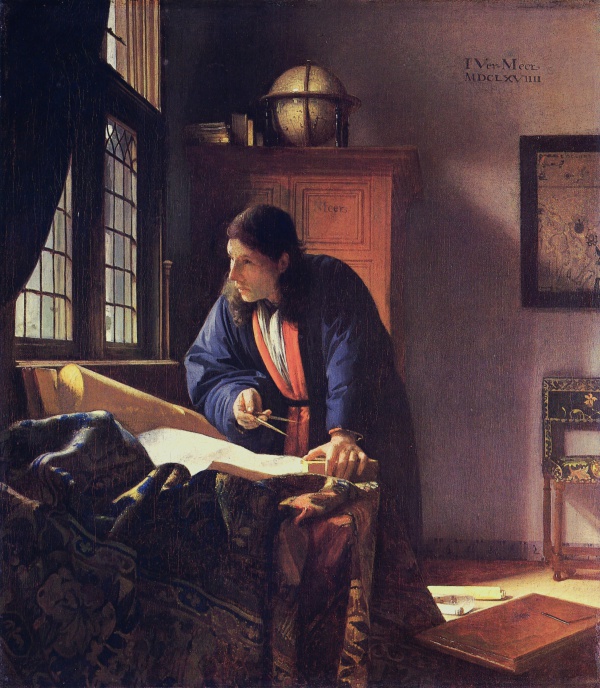Facts About The Geographer
"The Geographer" is a remarkable painting by the Dutch artist Johannes Vermeer, created between 1668 and 1669. This masterpiece is currently on display at the Städelsches Kunstinstitut in Frankfurt, Germany. Often mentioned alongside Vermeer’s "The Astronomer" these two works feature the same model dressed identically, leading many to consider them as companion pieces. Intriguingly, a 2017 study found that both paintings were created on canvases from the same bolt of cloth.
In "The Geographer" Vermeer depicts a geographer wearing a Japanese-style robe, surrounded by maps, charts, a globe, and books, symbolizing a thirst for knowledge and intellectual vigor. Vermeer made subtle enhancements to the painting to amplify the sense of movement and inspiration. The globe in the painting, published in Amsterdam in 1618, is turned towards the Indian Ocean, suggesting activities related to the Dutch East India Company. The accuracy of the cartographic details indicates that Vermeer likely had access to an expert in geography.
Many believe that the model for this painting was Anthonie van Leeuwenhoek, a contemporary of Vermeer renowned for his contributions to navigation, astronomy, and natural science. Over the centuries, "The Geographer" has changed hands multiple times and has been exhibited in cities such as Paris and Rotterdam.

 Denmark
Denmark